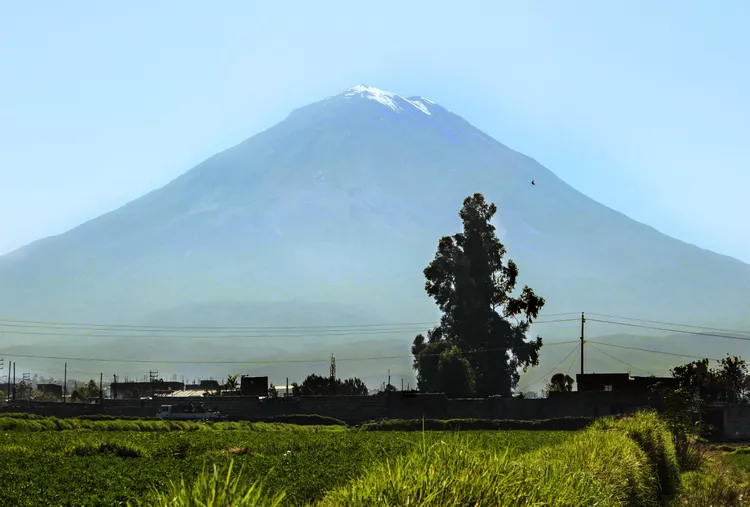Peruvians are proud of their country’s geographic diversity. If there’s one thing that most school kids remember, it’s the mantra of costa, sierra y selva: coast, highland, and jungle. These geographic zones run from north to south across the nation, dividing Peru into three regions of distinct natural and cultural characteristics.
The Peruvian Coast
Peru’s Pacific coastline stretches for 1,500 miles (2,414 km) along the western edge of the nation. Desert landscapes dominate much of this lowland region; however, coastal microclimates provide interesting variations.
Lima, the nation’s capital, is located in the subtropical desert near the midpoint of Peru’s coastline. The cool currents of the Pacific Ocean keep temperatures lower than expected in a subtropical city. Moreover, a coastal fog, called garúa, often covers the Peruvian capital, providing necessary moisture while further dulling the smoggy skies above Lima.
The coastal deserts continue south through Nazca and to the Chilean border. The southern city of Arequipa lies between the coast and the foothills of the Andes, where deep canyons cut through the rugged landscape and towering volcanoes rise from the lowland plains.
Along the north coast of Peru, dry deserts and coastal fog give way to a greener region of tropical savanna, mangrove swamps, and dry forests. Importantly, the north is also home to some of the country’s most popular beaches—popular, in part, due to the higher ocean temperatures.

The Peruvian Highlands
Stretching like the ridged back of a giant beast, the Andes mountain range separates the western and eastern flanks of the nation. Temperatures range from temperate to freezing, with snow-capped peaks rising from fertile intermontane valleys.
The western side of the Andes, which sits in a rain shadow area, is drier and less populated than the eastern flank. Consequently, while the east is cold and rugged at high altitudes, it soon plunges down into cloud forest and tropical foothills.
Another notable feature of the Andes is the altiplano, or high plains region, located in the south of Peru (extending into Bolivia and northern Chile and Argentina). This windswept region is home to vast expanses of Puna grassland, as well as active volcanoes and lakes, including Lake Titicaca.
Before traveling to Peru, it’s advisable to read up on altitude sickness. Furthermore, becoming familiar with the altitude table for Peruvian cities and tourist attractions is essential.

The Peruvian Jungle
To the east of the Andes lies the Amazon Basin, where a transition zone runs between the eastern foothills of the Andean highlands and the vast reaches of the low jungle (selva baja). This region, featuring upland cloud forest and highland jungle, is known as the ceja de selva (eyebrow of the jungle), montãna, or selva alta (high jungle). Notable settlements within the selva alta include Tingo Maria and Tarapoto.
Beyond the selva alta are the dense, relatively flat lowland jungles of the Amazon Basin. Here, rivers replace roads as the main arteries of public transport. Boats navigate the broad tributaries of the Amazon River, reaching far into the jungle, eventually stretching past the city of Iquitos (in the northeast of Peru) and onto the Brazilian coast.
According to the U.S. Library of Congress’s Country Studies website, the Peruvian selva covers about 63 percent of the national territory but contains only 11 percent of the country’s population. Aside from significant urban centers such as Iquitos, Pucallpa, and Puerto Maldonado, settlements in the low Amazon tend to be small and isolated. Almost all jungle settlements are located on riverbanks or the banks of oxbow lakes.
Moreover, extractive industries such as logging, mining, and oil production continue to threaten the health of the jungle region and its inhabitants. Despite both national and international concerns, indigenous peoples such as the Shipibo and Asháninka are struggling to maintain their tribal rights within their jungle territories.





